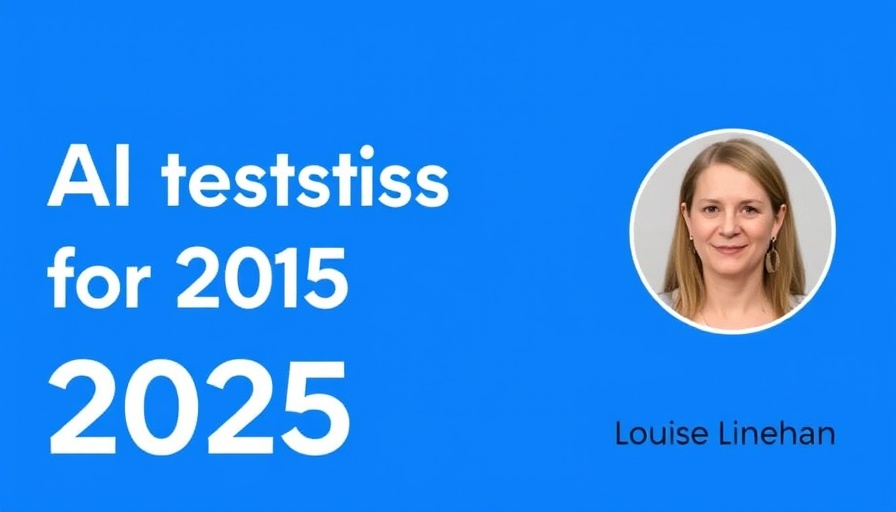
The Current Landscape of AI Growth
Artificial Intelligence (AI) is currently at the forefront of technological evolution, and understanding its trajectory is crucial for businesses and consumers alike. As of June 2025, the global AI market is projected to boast a staggering worth of $760 billion, stretching across numerous sectors and reshaping operational practices. This explosive growth is ignited not only by advancements in AI itself but also by increased investments in AI-integrated technologies.
Understanding the Financial Explosion of AI
The financial implications of AI are monumental. Reports indicate that global spending on generative AI alone is expected to reach $644 billion in 2025, a 76.4% increase from previous years. This significant investment highlights the rising demand for AI applications across various industries—ranging from production efficiency to enhancing customer interaction.
AI's Influence Across Multiple Industries
AI’s rapid adoption isn't confined to tech; it permeates finance, healthcare, retail, and more, with each sector experiencing tailor-made advancements. For example, in healthcare, AI diagnostics systems are aiding in disease identification, while retailers utilize predictive analytics to tailor customer experiences. These transformative effects underscore the necessity for businesses to integrate AI into their strategic frameworks or risk losing market share.
Comparative Advantage: U.S. vs. Global Growth
The United States continues to lead in AI funding, with private investments reaching $109.1 billion—12 times that of China's and 24 times that of the UK in 2024. This stark contrast reveals the competitive landscape of AI innovation, where the U.S. marks a significant advantage in venture capital devoted to AI development. Meanwhile, the UK’s AI sector is growing 30 times faster than its economy overall, indicating a sharp uptick in interest and investment in AI capabilities.
A Deep Dive into Generative AI Revenue Projections
Predictions for generative AI illustrate a robust growth trajectory. For instance, revenues are estimated to jump from $15.87 billion in 2024 to $29.74 billion in 2025, further consolidating the importance of AI in content creation and automation. This trend suggests that businesses across varying sectors should take heed—embracing AI is no longer optional; it is essential for survival and success.
Future Predictions: The Next Decade of AI
As we look ahead to the next decade, the implications of AI development are enormous. With ongoing infrastructure improvements and AI's widening availability in consumer products, we can anticipate substantial shifts in economic and employment landscapes. The digital revolution signifies a transition towards a more automated future, prompting questions about workforce adaptation and skill evolution.
Conclusion: Integrating AI into Strategy
As AI increasingly becomes integrated into daily operations and corporate strategies, understanding these statistics and trends becomes vital for forward-thinking businesses. For entrepreneurs, marketers, and sectors heavily reliant on technology, leveraging AI isn’t just a trend—it’s a necessity to ensure competitive advantage and drive revenue growth.
 Add Row
Add Row  Add
Add 




Write A Comment